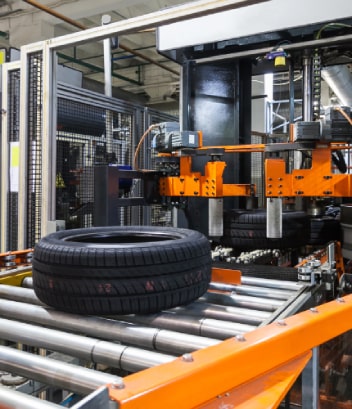

The mere foundation of so many businesses, like manufacturing, mining, packaging and warehousing conveyor belts. But the process of making a functional conveyor from a plan is far more difficult than we think.
The challenges faced by belt conveyor manufacturers can affect productivity, creativity, and financial results, ranging from growing material costs to changing customer expectations. The main obstacles are broken down here, along with workable ways to get beyond them.
Problems faced by the manufacturers
1. Material Costs and Supply Chain Disruptions
Due to geopolitical conflicts, global economic developments and post-pandemic conflicts, supply networks are very uncertain. Apart from the delays in important parts like motors and bearings, conveyor belt manufacturers are also dealing with the increasing cost of commodities like copper, steel and rubber. These problems bring in higher project costs, delayed deliveries, and strained vendor relationships. To remain in demand, these manufacturers have to continuously bring a balance between cost, speed and reliability as customers demand fast and cheap resources.
Solution
To make the process of customization easier, regulate parts and use a modular architecture. This gets rid of the need to make a new system from scratch for every client, allowing for workable setups and speeds up the design process.
2. Customization Demands Are Increasing
In the specialized production environment of today, off-the-shelf conveyor systems are no longer adequate. The clients demand highly customized solutions that are suited to their layouts, materials, and throughout objectives and environmental circumstances. Even though its essential, this degree if custom-built can bring strain on resources, lengthen lead times and make scaling difficult, especially because consumers also want real-time simulations, quicker design cycles, and quick deployment without sacrificing quality or safety.
Solution
Work with a range of vendors, maintain additional inventory of essential items, and use forecasting techniques to estimate demand. Delays and expenses can also be decreased by establishing long-term supplier agreements and sourcing locally.
3. Energy Efficiency & Environmental Regulations
Now-a-days, the demand for ecologically friendly and energy efficient conveyor systems is due to the increasing stress on sustainability. Conveyor belt manufacturers are also subject to laws governing noise, pollution and material use. This brings attention to implementing greener manufacturing techniques and lowering energy usage by combining smart drives, low-friction parts, and high efficiency motors. This increases operational cost savings which drives the manufacturers to try to drive a balance between performance and eco-conscious design.
Solution
Combine low-friction materials, variable frequency drives (VFDs), and high-efficiency motors. Provide energy monitoring systems and market environmentally friendly product lines that satisfy customer and regulatory sustainability requirements.
4. Technological Integration
Conveyor systems that smoothly connect with automation, robots, and Industry 4.0 platforms are essential for modern manufacturing. But a lot of normal solutions are insufficient as they don’t have the connectivity or intelligence needed for modern smart industries. To boost performance and maintenance, clients today ask for conveyors with sensors, remote monitoring and real time data capabilities. This entails spending money on staff that are knowledgeable in both digital and mechanical technology, smarter controls, and systems that are simple to connect to. This contributes to the provision of contemporary, fully integrated conveyor solutions that are compatible with the automated, technologically advanced factories of today.
Solution
For automation compatibility, predictive maintenance, and real-time monitoring, integrated sensors, IoT connectivity, and intelligent controls. Prepare your systems for Industry 4.0 settings in the future.
5. Skilled Labor Shortage
There is a growing labor shortage in the conveyor industry, particularly in fields like mechanical design and automation. It’s harder to keep the quality and achieve deadlines when more experienced employees retire and hardly any new professionals join the industry.
Solution
Belt conveyor manufacturers must address this by collaborating with technical institutions, investing in training and making user-friendly technologies that demand less experience skills without giving up accuracy and quality.
Conclusion
Modern conveyor belt manufacturers are facing tons of pressing issues in this world where supply demand never ceases. However, as most of the problems, these are also solvable if looked upon deeply.
In the conveyor manufacturing sector, Automag is a reputable and creative leader. Automag continuously provides dependable, specialized conveyor solutions that are suited to contemporary industrial demands, all while maintaining a strong commitment to quality, accuracy, and customer satisfaction. They are chosen partners for companies looking for solutions that are efficient, long-lasting, and future-ready because of their innovative thinking, use of cutting-edge technology, and commitment to resolving practical problems. Automag is still the industry leader in performance-driven fields.
Want to know more? Contact us now.
Also Read :
Why Choosing the Right Belt Conveyor Manufacturer Matters for Your Business
Understanding Belt Conveyors: What They Are and Why They Matter


